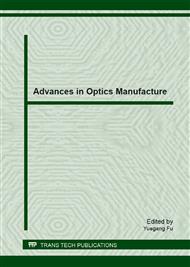p.85
p.93
p.97
p.103
p.111
p.115
p.124
p.131
p.137
Study on Raman Spectra of Zinc Gluconate under Effect of Different Solvent
Abstract:
Raman spectrum is a kind of characteristic spectrum. The information of molecular vibration and rotation can be obtained by studying Raman spectrum. Raman spectrum will be changed because of molecular interaction under effect of different solvent. We selected zinc gluconate as the object of research. Zinc gluconate is dissolved respectively in ethyl chloride, benzene, ring of ethane,chloroform, acetic acid, ethylene oxide, n-propanol, n-butanol solution, and Raman spectra were tested. The change of molecular internal structure and the interaction of molecular functional groups are studied by means of measuring Raman frequency shift, bandwidth, and light intensity. Thus, the information of solute structure change can be obtained. Experiments show that when zinc gluconate dissolved in the organic solvent, molecular gap became larger, its velocity increased, and stretching vibration of associating OH key group became strong. Methylenes in polar and non-polar molecule interact, and the polarization changed. In different polar solvents, Raman spectra had different changes. When the bond length increases,the stretching vibration frequency of molecules moves to the direction of low frequency. It produces red shift instead of blue shift. The results of this paper provide a basis to study molecular interactions further.
Info:
Periodical:
Pages:
111-114
Citation:
Online since:
May 2013
Authors:
Keywords:
Price:
Сopyright:
© 2013 Trans Tech Publications Ltd. All Rights Reserved
Share:
Citation:


